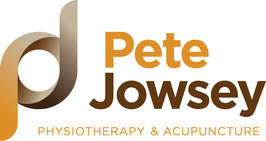
Ever found yourself saying that? You’re not alone. Knees are important joint s and they serve us tremendously well most of the time but there are many causes of knee pain.
The knee consists of the main knee joint or tibio-femoral joint, which has two compartments, and the patella-femoral joint, where the patella sits on the front of the joint. The main knee joint does the majority of the weight bearing and the patella-femoral joint acts as a pulley whenever we straighten our knee, stand, walk or run. The knee is supported by ligaments, has two weight bearing cartilages, several fluid filled spacers, and connective tissue. Then there’s the muscles controlling the knee- quadriceps, hamstrings and calf. These join to the bone around the knee by tendons.
Common reasons for knee pain include:
Patellofemoral pain syndrome
Caused when pressure on the back of the knee cap becomes too high and pain and swelling can result.
Simple ligament strains
These can occur during the strains of life or sport. Many heal themselves over 6 weeks but a more significant ligament injury may need more attention and cause an unstable knee.
Meniscal pain
Twisting on a bent knee can cause injury to the meniscus cartilages. These show wear with age routinely but can cause pain and swelling if torn. Part of the cartilage has good blood supply and heals well, but part of it doesn’t and might need further attention.
Osteoarthritis
The joint surfaces are covered with a layer of a different type of cartilage. Wear of these of these is what’s known as osteoarthritis and most commonly affects the inner (medial) compartment. OA can also affect the patello-femoral joint. This isn’t always painful but can be for many people.
ITB syndrome
A large band of connective tissue comes down the outside of the thigh and attaches near the knee. This is known as the ITB. It can become tight and irritate the tissue underneath it. This is quite common in runners. Strengthening the the bottom muscles, or gluts, can help this problem.
Biomechanical problems
Contact forces from the ground also influence the forces through the knee. Orthotic insoles can make real difference to some people.
Excessive loading
If you carry too much bodyweight your knees may hurt. Good weight management is really important if this is the case for you.
Poor technique
People can experience knee pain due to poorly performed sports and exercise technique, or through poorly structured sports and fitness programs. Others due to inactivity and muscles being weak.
The knee is an engineering system – if all the component parts are serviced or maintained adequately then you often find that the knee performs much better with less or no problems.
Be kind to knees – they out number people two one!
The knee consists of the main knee joint or tibio-femoral joint, which has two compartments, and the patella-femoral joint, where the patella sits on the front of the joint. The main knee joint does the majority of the weight bearing and the patella-femoral joint acts as a pulley whenever we straighten our knee, stand, walk or run. The knee is supported by ligaments, has two weight bearing cartilages, several fluid filled spacers, and connective tissue. Then there’s the muscles controlling the knee- quadriceps, hamstrings and calf. These join to the bone around the knee by tendons.
Common reasons for knee pain include:
Patellofemoral pain syndrome
Caused when pressure on the back of the knee cap becomes too high and pain and swelling can result.
Simple ligament strains
These can occur during the strains of life or sport. Many heal themselves over 6 weeks but a more significant ligament injury may need more attention and cause an unstable knee.
Meniscal pain
Twisting on a bent knee can cause injury to the meniscus cartilages. These show wear with age routinely but can cause pain and swelling if torn. Part of the cartilage has good blood supply and heals well, but part of it doesn’t and might need further attention.
Osteoarthritis
The joint surfaces are covered with a layer of a different type of cartilage. Wear of these of these is what’s known as osteoarthritis and most commonly affects the inner (medial) compartment. OA can also affect the patello-femoral joint. This isn’t always painful but can be for many people.
ITB syndrome
A large band of connective tissue comes down the outside of the thigh and attaches near the knee. This is known as the ITB. It can become tight and irritate the tissue underneath it. This is quite common in runners. Strengthening the the bottom muscles, or gluts, can help this problem.
Biomechanical problems
Contact forces from the ground also influence the forces through the knee. Orthotic insoles can make real difference to some people.
Excessive loading
If you carry too much bodyweight your knees may hurt. Good weight management is really important if this is the case for you.
Poor technique
People can experience knee pain due to poorly performed sports and exercise technique, or through poorly structured sports and fitness programs. Others due to inactivity and muscles being weak.
The knee is an engineering system – if all the component parts are serviced or maintained adequately then you often find that the knee performs much better with less or no problems.
Be kind to knees – they out number people two one!
